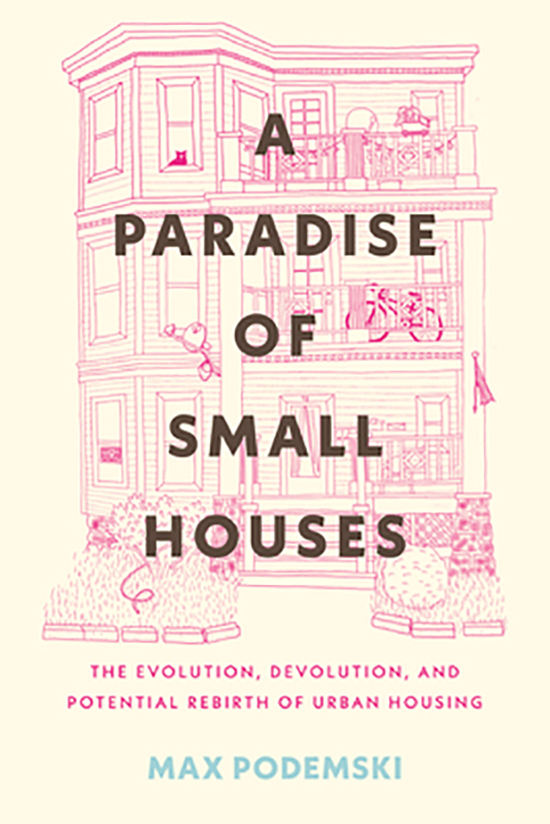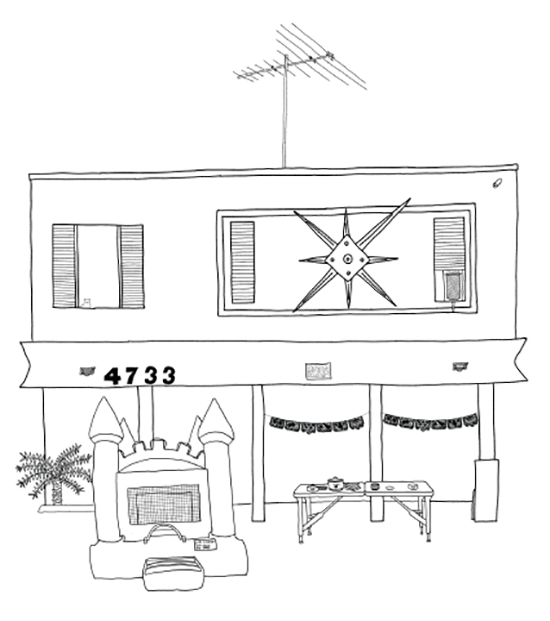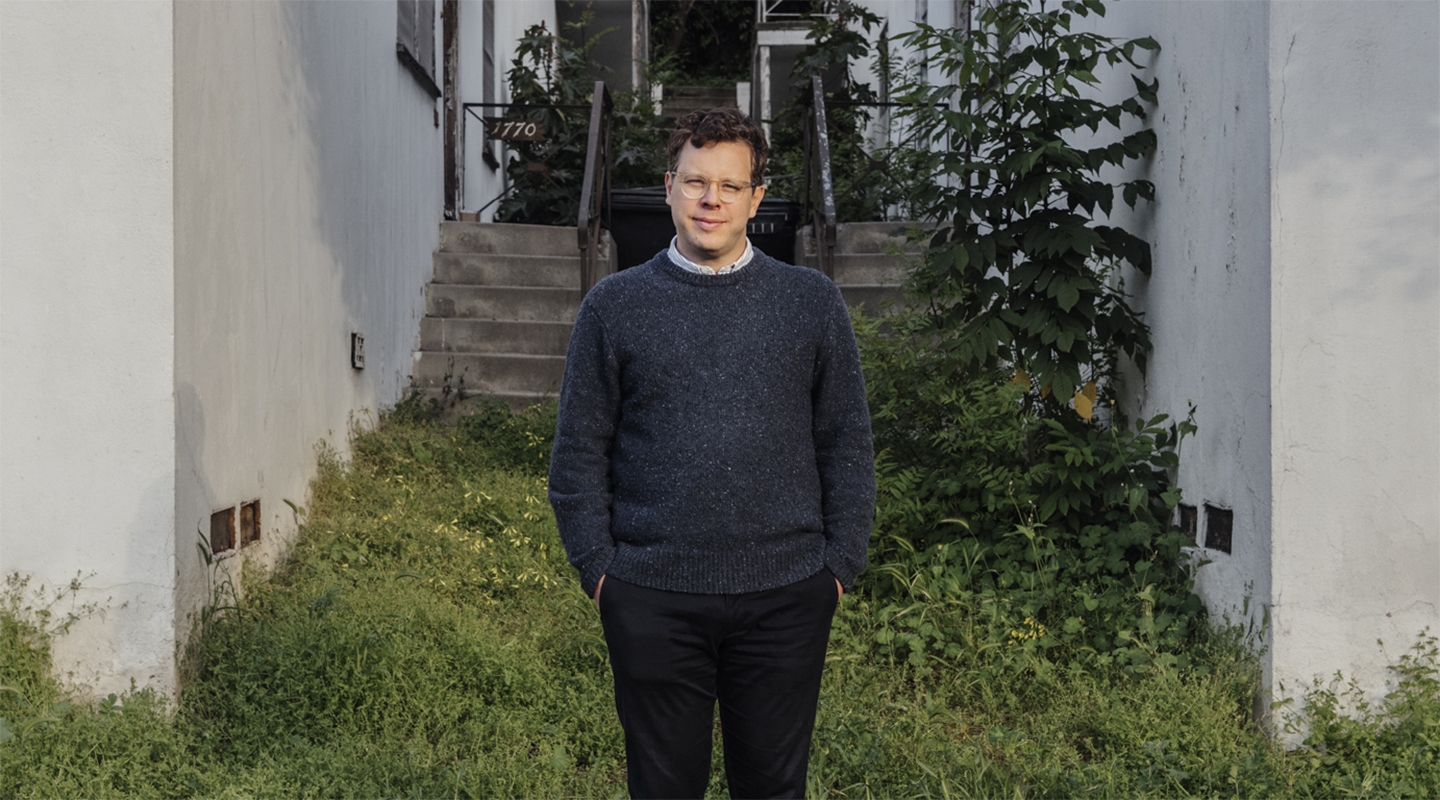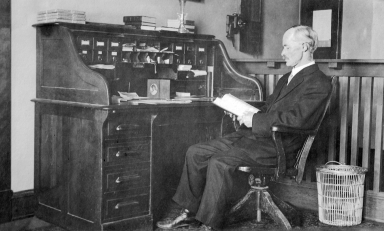In his first book, city planner and architecture buff Max Podemski ’06 traces the DNA of urban housing
Growing up in Portland, Ore., Max Podemski ’06 became interested in urban planning at a very early age. “Portland has a reputation for progressive urban planning, and every day I’d read The Oregonian and decided that’s what I wanted to study,” he recalls. “I also wanted to go to a liberal arts college, so Occidental checked those boxes for me.”

During his travels around the country, Podemski—an urban planner for the city of Los Angeles and lifelong architecture buff—came to appreciate the unique housing types that distinguish one city from another. “Boston looks completely different than New York City or Philadelphia, and San Francisco is completely different than L.A.”
For his first book, A Paradise of Small Houses: The Evolution, Devolution, and Potential Rebirth of Urban Housing (Beacon Press), Podemski traces the origins of nine types of housing and the cities where they mostly began, from the row houses of Philadelphia up through the town houses of Houston. “I was looking for housing types that are ubiquitous both in their city and in the region—buildings that were mass produced in one geography during a certain time,” he says.
Others include the New York City tenement, the New Orleans shotgun house, and the Chicago workers cottage. For the bungalow, which actually originated in Southern California, Podemski opted to write about Portland instead “just because I grew up there and I thought I could make that chapter more interesting.”
Of all the structures he discusses, L.A.’s “dingbat” has the least enticing name. “I found this article from a paper in Pomona from the 1950s where a developer was pitching a project to the Pomona City Council and described his housing development as ‘dingbat,’ which is a term for something that’s shoddily built and thrown up cheap. I don’t know why he used that to describe his own development,” Podemski adds with a laugh.
The term came to be associated with a particular type of apartment structure that sprung up all over Southern California in the post-WWII building boom. “I actually lived in a dingbat in Eagle Rock when I went to Oxy—the Queens Arms at Eagle Rock Boulevard and York,” says Podemski, who lives in Silver Lake (between a duplex and a fourplex). “In films like The Karate Kid and Slums of Beverly Hills, if the character is downwardly mobile, they find themselves in a dingbat.”

After graduating from Oxy, Podemski worked for two years living and working in the East Bay Area as an analyst for the City of Pittsburg Redevelopment Agency. From there, he started the first of two stints with Pacoima Beautiful, an environmental justice nonprofit in the San Fernando Valley, completing a master’s in urban planning from Columbia University in between.
In 2018, Podemski joined First 5 LA, one of California’s largest funders of early childhood development. He worked on its Built Environment Policy Advocacy Fund team and created a grant program to aid low-income communities with applying for and implementing grant money for community-supporting infrastructure (water, transit, and parks) from local and state agencies.
In his current role as a transportation planner for the L.A. Department of Transportation, Podemski’s projects include working on the Vision Zero program, the city’s commitment to eliminate traffic deaths among pedestrians and cyclists by 2025 through the installation of new traffic signals and crosswalks around the city.
“I walk a lot and have two small kids, so traffic violence is a personal issue to me,” says Podemski, a longtime member of the LADOT Pedestrian Advisory Committee. “Crashes are a leading cause of deaths in Los Angeles. Vision Zero has broader benefits in making our streets more pleasant to walk down and neighborhoods more community-focused.”
A Paradise of Small Houses was a six-year labor of love for Podemski, who also did all the illustrations for the book. As a student at Oxy, he studied abroad in Denmark in an architecture program where we got to sketch building, “so I developed the habit there.”
While the book grew out of Podemski’s interest in these different structures, it also dovetails with contemporary themes such as the urban housing crisis. “The United States used to excel at building light-filled, spacious housing for working people, and we have forgotten how to do it,” he says. “I thought this book could also inspire policy change to build more of these types of housing.
“The vast majority of housing in American cities was built by and for working-class people who were often immigrants,” he adds. “The housing they built was ingenious in terms of adapting local cultures and climates and geographies while making houses that in many cases have really stood the test of time.”
In closing, Podemski believes, “We don’t need to invent new cities or new building types. We have the template of how we can build new housing in ways that are in keeping with the traditional fabric of our communities. We just need to make it possible to build like that again.”




